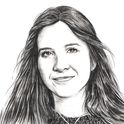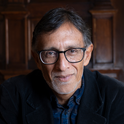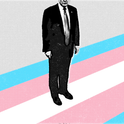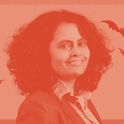Helena de Bres and I are talking about our twins. De Bres has a theory that one twin is always the quiet one—we establish that is both of us. De Bres, a philosopher, has been talking to a lot of twins since she started writing How to be Multiple, her new book about twinness, which was illustrated by her sister Julia. She met another pair of identical twins on her book tour, and they now have a WhatsApp group chat called “fellow freaks”. The four compare notes on their similarities. “They apparently have been spending a huge amount of time trying to work out which of them is me and which of them is Julia, and they’ve been having private twin discussions about it.”
“It’s nice talking to a twin,” she tells me. “My defences have to be up a bit with non-twins. Because you never know if they’re just going to throw out some weird question.” Singletons, as de Bres calls non-twins, think twins are weird. We are the object of repulsion and fascination—think the creepy girls in the hallway in The Shining, Victorian twin freak shows and Nazi doctor Josef Mengele’s brutal experiments on over 3,000 twins in Auschwitz. Fictional twins, such as Hallie and Annie in The Parent Trap (1998), and Viola and Sebastian in Shakespeare’s Twelfth Night, baffle singletons by swapping places. “We identical twins, then, are tricky, disruptive, even seditious creatures,” de Bres writes. Each chapter heading is an annoying question that people ask twins. Wait, are you you or the other one? Which is the evil twin? Have you ever switched partners?
People find identical twins strange because they don’t see them as individual people
De Bres grew up in New Zealand, but moved to America and now teaches philosophy at Wellesley College in Massachusetts. Writing about being a twin was “a very natural subject” for her, she says. “I think many twins have grown up thinking about personal identity and about love and about free will. It’s just built into the experience.” Working on the book with her sister, while back in New Zealand on sabbatical during Covid, made the pair feel more connected. “I was writing the first draft basically alongside her. And we would have these meetings, just chatting over coffee in a cafe about how the book was evolving.”
People find identical twins strange because they don’t see them as individual people. They look the same—could they think the same? But, de Bres says, twins themselves can feel a blurring of identity. Sometimes they lean into their similarities. She mentions an American plastic surgeon who makes identical twins look more like each other after their features diverge in adulthood. (Those twins are real freaks.) “Maybe I’m exaggerating in the book about the sense that twins let their boundaries merge. Maybe I’m buying into some -singleton narrative about it,” she says, conscious she’s giving ground to the enemy. “But a lot of people have told me about these experiences.”
My sister and I share an Apple ID, so our calendars and photos merge into one account. Sometimes I think her photos are me. We used to swap passports at the airport, and we lost our first tooth on the same day. Every identical twin has moments of feeling like they’re half of one person. De Bres confuses herself with Julia when listening back over the voice messages they send each other. “I’ll be trying to listen to hers and I’ll be listening to my own, and I don’t realise it’s me until a few sentences in, because even I can’t tell the difference. It’s a weird trippy thing when you think you’re listening to her and then—oh shit!—it’s actually me.”
It’s nice to be part of a pair. “It’s just in the background all the time—the sense that she’s there for me,” de Bres says. “Without her, I’d be much more existentially adrift.” Not being a twin is far weirder than being one.













